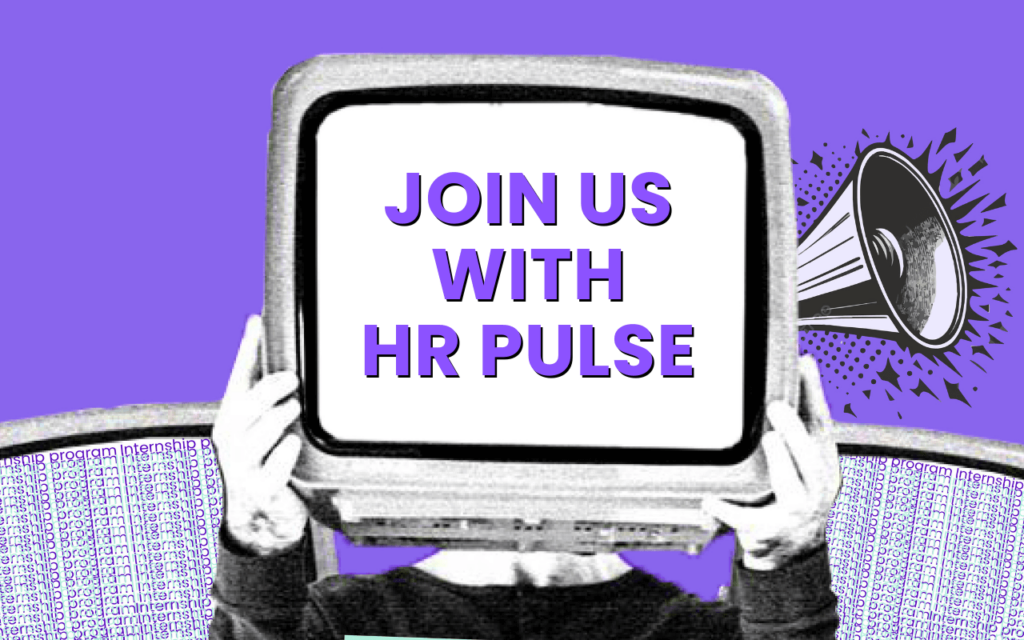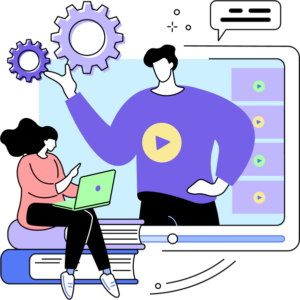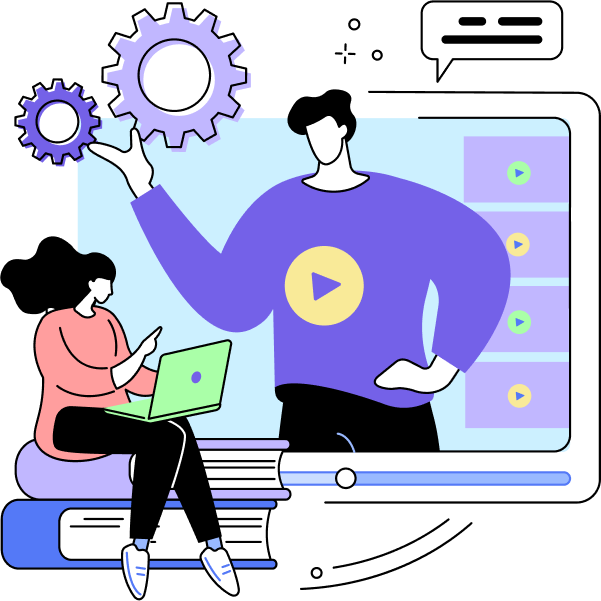The HRMS suite, or Human Resource Management System suite, has emerged as a crucial tool for organizations. But what exactly is an HRMS suite?
Essentially, it is a software platform that integrates various HR processes into one cohesive system. From payroll and benefits administration to recruitment and performance management, an HRMS suite is a central hub for managing employee-related information. Implementing an HRMS suite in modern organizations cannot be overstated. As businesses grow and the workforce becomes more diverse, human resource management challenges multiply.
An effective HRMS suite helps streamline these complexities by automating routine tasks, ensuring compliance with labor laws, and providing valuable insights through data analytics. By leveraging such a system, HR teams can focus more on strategic decisions that enhance employee engagement and drive organizational success.
This blog aims to explore the multifaceted world of HRMS suites. We will cover the key components that make up an HRMS suite, discuss the numerous benefits of implementing such a system, and provide guidance on choosing the right HRMS suite for your organization.
Additionally, we’ll address common challenges faced during implementation and look at emerging trends that are shaping the future of HR technology. By the end of this post, you’ll have a clearer understanding of how an HRMS suite can significantly improve your HR practices and support your organization’s growth.
The Difference Between a HRIS vs. HRMS
You might come across the term "HRIS," which stands for Human Resources Information System, often used interchangeably with HRMS. This goes back to the 1980s when IT departments were primarily referred to as Management Information Systems (MIS).
As human resources began to embrace technology, HRIS emerged as a specialized extension of MIS. The primary function of an HRIS is to record and manage employee data electronically. Consequently, many HR professionals use HRIS to describe the transition of HR records, processes, and reporting to a digital format through software solutions.
As technology advanced and the scope of these systems grew beyond just managing employee records, the term HRIS evolved into HRMS, or Human Resource Management System. Today, both terms are frequently used to refer to software systems that capture employee information and streamline HR processes within an organization.
Features of an HRMS system
When choosing the right HRMS for your organization, it's beneficial to break it down into functional components. Typically, modern HRMS platforms encompass seven key areas, each with varying levels of emphasis.
- Candidate Management: This function focuses on managing your interactions with prospective employees, including job offers and how you promote your brand to the outside world as well as to current staff looking to apply for internal positions or refer others. It’s especially crucial for companies that prioritize the candidate experience, helping streamline everything from job applications and resume handling to interview scheduling and onboarding.
- Employee Engagement: Engaged employees produce higher-quality work and align more with the company's values and goals. Thus, it’s essential to facilitate connections between employees and leadership, as well as among peers. The HRMS often serves as the platform for completing training courses, acquiring new skills, mapping out career paths, receiving recognition, or taking on mentoring roles.
- Employee Management: Often referred to as "core HR," this function provides a centralized portal that supports analysis, reporting, and compliance activities. Here, you can organize your workforce into departments or locations, establish reporting relationships, and link payroll to accounting cost centers. Personal information is logged and kept up to date in this section, forming the backbone of employee self-service initiatives, enhanced reporting capabilities, and improved HR service delivery.
- Optimization: Extracting insights from the HRMS to shape a vision for the future workforce is a significant value proposition, yet it’s often the least utilized feature. The true benefits of this function typically emerge during significant events like mergers or economic shifts. Companies that proactively focus on workforce optimization tend to be more resilient to change, retain top talent more effectively, and achieve better employee engagement.
- Payroll: One of the fundamental functions of an HRMS, payroll management involves calculating earnings, handling deductions, and processing payments as seamlessly as paying rent. Payroll functions include managing benefit elections and associated costs for both employees and employers. Full-service payroll solutions also automate tax filings and payments, while self-service features allow employees to modify deductions, adjust direct deposit details, and access their earnings statements without needing HR assistance.
- Workforce Management: This area entails tracking employee development, conducting evaluations, and managing disciplinary actions; it also involves monitoring time and attendance and ensuring a safe and healthy workplace. Compensation planning, performance management, learning initiatives, and incident tracking are also managed here. HR can establish timesheet structures, overtime rules, time-off policies, and approval processes to enhance automation, control, and efficiency. The performance review process and goal management are also structured within this function.
- Contingent Workforce Management: Closely related to workforce management, this function is vital for companies that employ part-time or temporary staff. Contractors, consultants, interns, and temps offer specialized skills, support local community efforts, and help meet fluctuations in labor demand.
While the HRMS doesn’t fully manage these relationships, since these workers often aren’t on the payroll or eligible for benefits, tracking how many contingent workers are engaged at any time and the associated costs remains essential. Once you have a clear grasp of the functions that matter most to your organization, it’s time to explore the specific features of various HRMS options.
Who Uses HRMS Software?
Traditionally, many areas of human resources have operated in isolation, meaning that feedback or new information from one department didn't necessarily reach the others. A modern HRMS breaks down these silos by streamlining processes for various professionals while ensuring that the data collected and feedback shared are communicated effectively, thus enhancing overall people analytics.
HR Professionals
For HR teams, the benefits of an HRMS extend far beyond simple access and editing of employee data. These systems provide powerful data-driven reporting capabilities and automate complex talent management tasks, enabling HR professionals to work more efficiently and strategically.
Recruiters
HRMS tools offer recruiters a centralized platform to manage their activities. They can post job openings, source and nurture candidates, and access onboarding functionalities, all from one convenient location.
Managers
Managers can leverage HRMS software via their mobile devices to oversee team structures, track employee attendance, approve time-off requests, and monitor performance. This allows them to identify when team members may need additional support or feedback to achieve their goals.
Employees
A user-friendly HRMS portal empowers employees to manage their own information with ease. They can edit their personal details, view organizational charts, submit time and vacation requests, check learning assignments, and even track their career development goals.
HRMS and the Next Steps in Digital Transformation for HR
Digital transformation in HR, like any significant operational change, often encounters initial resistance and hesitation, along with some unavoidable risks. To effectively navigate this change, it’s crucial to start by communicating your project’s objectives and goals clearly.
By fostering open lines of communication between team leaders, executives, and HR specialists, you can begin breaking down barriers to acceptance. Implementing strong change management and planning strategies will better prepare your teams and help secure buy-in from the outset.
As you embark on your journey toward HR digital transformation, consider the following essential checklist items:
Data Integrity: Before initiating the data migration process, ensure that you have the right resources in place. This may involve upskilling or reskilling your IT staff to minimize mistakes and ensure a smooth transition.
Costs and Effort: Take the time to evaluate the project requirements across all affected areas of the business, including implementation and integration efforts. Establish realistic budgets and timelines to set your deployment up for success.
Current and Future Needs: Collaborate closely with department heads and team leaders from the start. Understanding their specific goals, requirements, and challenges is crucial. Make sure your HRM system is flexible enough to scale with their evolving needs.
Compliance: Identify relevant regulatory, employment, and legal requirements, and verify that your new system can accommodate these compliance needs across all regions where your organization operates.
Readiness at Launch: Engage your HR team early on to help create training schedules and objectives. Set monthly milestones to ensure that all administrators, managers, and employees are adequately trained and prepared to fully leverage the capabilities of the new HRM system.
Become a part of the Paismo community
Paismo HR software can help simplify your HR processes. In today's dynamic economic environment, efficient HR and automated payroll management are no longer a luxury but a necessity. Paismo is a comprehensive solution transforming traditional HR complexes into streamlined and automated workflows. Paismo and its paired biometric devices can be used for your business to mark employee attendance and record their timesheets accurately.
Paismo simplifies your tasks with its core HRMS, timesheets, and attendance management, as well as biometric attendance, payroll automation, and leave management system.
Take the first step toward modernizing your HR and payroll processes and explore what Paismo can do for you. Book a demo with our exceptional sales team here.









